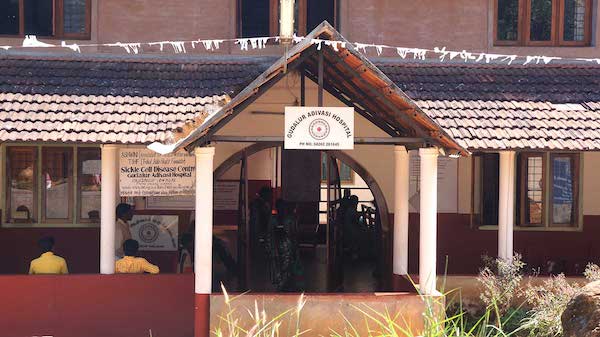In a recent tweet, Suhag Shukla of the Hindu American Foundation (HAF) claimed that the portrayal of Bomman and Ellie in the documentary “The Elephant Whisperers” underscores Hinduism’s “inarguable indigeneity.”
She takes a giant leap of faith from an Adivasi couple who happen to follow Hindu practices to declaring that their forebears must have also been Hindus. Extensive scholarship on the tribes of the Nilgiris dating back 150 years shows no basis for such a simplistic and self-serving assertion.
My wife and I have long been supporting tribal communities in the Nilgiris, where “The Elephant Whisperers” was filmed. Over the last 20 years, we have had many opportunities to spend time with community-based organizations that support them in education, healthcare, and land rights.
The fact is, despite all the pressures to assimilate with the larger communities, the primary self-identity of these indigenous communities is still their tribe: Kattunayakans (hunter-gatherers), Mullukurumbas (settled agriculturalists), Bettekurumbas (shifting agriculturists and now forest department workers), and Paniyas (bonded workers in the recent past, who’re now casual laborers or small tea growers).
Each tribe has its own distinct customs and languages: Bettakurumbas do identify as Hindu, and many of their traditional animistic spaces of worship have been taken over as mainstream Hindu temples. Most others practice their traditional faiths mixed with Hindu symbols. They are typically meat-eaters, but some are known to consume beef as well, which is not uncommon among many Adivasi tribes. Mullukurumbas and Kattunayakans have very little in common in their socio-economic status.
It was a huge disappointment to see the Hindu American Foundation elide over all the real issues faced by tribal communities and instead zero in on their supposed Hindu ancestry – a red herring, in my view.
Bomman, in “The Elephant Whisperers” is a kattunayakan (as he says at the start of the film), and Bellie is a Bettakurumba. The film was set in the mixed community of Thepakadu, inside the Mudumalai forest, where tribals and non-tribal forest department workers live together. So, their getting married didn’t fall into either of their tribe’s customs and was more Hinduized, as we saw in the documentary.
Some of the shared traits that distinguish the tribes of the Nilgiris from the people from the plains include a natural inclination towards gender equality, excellent female hygiene, and a relaxed attitude towards sex and marriage. On the health side, many tribal communities exhibit genetic abnormalities not seen in the plains, including sickle cell anemia — which they share with America’s indigenous and black communities.
Most of the tribes in the Gudalur area are members of the Adivasi Munnetra Sangam (AMS), which was set up in 1988 and has helped them defend and regain their rights to forest resources and to lands that had been promised to them, but were often encroached upon with impunity by corporate tea plantations.
The collective term “Adivasi” (which simply means original inhabitants) refers to hundreds of indigenous communities throughout India and is now in common usage. In contrast, the term “vanvasi” (forest dweller) is a term coined by Hindu nationalists, chosen consciously to deny their indigeneity. Most Adivasis reject that label.
Since AMS was established in 1988 under the umbrella of the NGO, ACCORD, the lives of 20,000 Adivasis in the Gudalur area have changed dramatically. They fought for and regained hundreds of acres of land. Tribals who used to stop on the streets to look away and avoid eye contact with non-tribals (who considered them inauspicious), walk with their heads held high today. Some of the Paniyas who were bonded to the land-owning Chettis, are now small tea plantation owners or casual laborers.
Communities that seldom saw doctors and hospitals in the 1990s, and used to leave their sick in their verandahs to recover or to die, now run a 50-bed modern hospital, under ASHWINI, with such superior care that even non-Adivasis in the area now prefer to go there. Thanks to ASHWINI, the infant mortality rate has fallen from 250 per 1,000 in 1987 to around 20 per 1,000 these days. Maternal deaths are also getting fewer each year.
A school started initially to educate the children of ACCORD, has blossomed into an Adivasi school VIDYODAYA, which emphasizes the preservation of tribal cultures and languages, while at the same time teaching the best of science, math, and the environment.
Given this backdrop, my hope after I saw “The Elephant Whisperers” was that the movie might stimulate discussions on issues such as the worldwide movement against elephants in captivity; the fragile co-existence of man and elephants and the proposal for an elephant corridor that would displace many Adivasis; imminent dangers to Adivasi communities by efforts to gut the 2006 Forest Rights Act; and challenges faced by the Nilgiris biosphere reserve by proposed projects like the underground lab for neutrino studies, which could displace thousands of people from their ancestral homes.
So, to me, it was a huge disappointment to see the Hindu American Foundation elide over all the real issues faced by tribal communities and instead zero in on their supposed Hindu ancestry – a red herring, in my view.
Suhag Shukla’s tweet exemplifies the shallow and monochromatic ideology of Hindutva, especially when it comes to issues that affect the daily lives of marginalized communities. But then, her tweet was merely a continuation of the decades-old effort by the RSS and its Parivar to co-opt Adivasis into Hinduism by whatever means necessary…
This story was originally published in americankahani.com. Read the full story here







